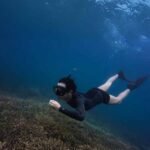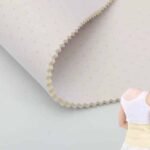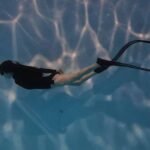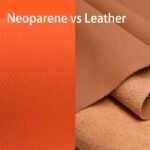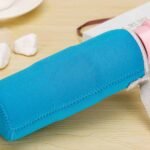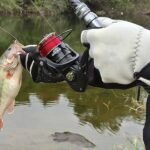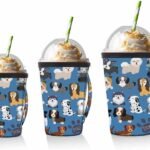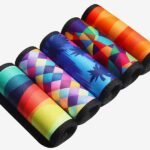Have you ever struggled with finding the right gear to wear under your neoprene waders? Wearing the wrong layers can lead to discomfort, reduced flexibility, and even health issues during your water activities. Knowing what to wear under your waders is essential to stay warm, comfortable, and perform your best in the water.
Choosing the right layers under neoprene waders ensures optimal warmth, flexibility, and protection, enhancing your overall experience in the water.
I remember gearing up for my first fishing trip in cold waters. My neoprene waders kept me warm, but without the right layers underneath, my legs felt stiff and uncomfortable after a few hours. This made me realize the importance of selecting the appropriate clothing to wear under waders.
Let’s explore the best options for layering under neoprene waders to maximize comfort and performance.
What Are Neoprene Waders?
What exactly are neoprene waders[1], and why are they popular among outdoor enthusiasts? Neoprene waders are waterproof boots that extend up to the chest, made from neoprene material. They are designed to keep your legs dry and warm in cold and wet conditions, making them ideal for activities like fishing, kayaking, and river trekking.
Neoprene waders are essential gear for staying dry and warm in cold water environments, providing both protection and insulation.
During a winter kayaking expedition, my neoprene waders were a lifesaver. They kept my legs dry and warm despite the freezing temperatures and constant splashes, allowing me to enjoy the adventure without discomfort.
Dive Deeper: Materials and Design of Neoprene Waders
Neoprene Composition
Neoprene is a synthetic rubber that offers excellent insulation and flexibility. The thickness of neoprene used in waders typically ranges from 2mm to 5mm, with thicker materials providing more warmth and durability.
Design Features
Neoprene waders often feature reinforced knees and seat areas to withstand abrasion and provide extra protection. They also include adjustable straps and buckles for a customized fit, ensuring that water doesn’t seep in from the top.
| Feature | Description |
|---|---|
| Material | Neoprene, a flexible and insulating synthetic rubber |
| Thickness | 2mm to 5mm for varying levels of warmth |
| Reinforcements | Enhanced durability at knees and seat |
| Adjustability | Straps and buckles for a secure and comfortable fit |
| Seam Construction | Welded seams to prevent water ingress |
Understanding the materials and design of neoprene waders helps in selecting the right pair that meets your specific needs for warmth, flexibility, and durability.
What to Wear Under Waders to Stay Warm?
How can you stay warm while wearing neoprene waders in cold water? Choosing the right layers is crucial to trap heat and provide insulation. Typically, wearing moisture-wicking base layers and insulating mid-layers beneath your waders can significantly enhance warmth and comfort.
Layering with moisture-wicking and insulating clothing beneath neoprene waders helps maintain body heat and prevent chills in cold water.
On a chilly fishing trip, I found that my thermal base layers kept my legs warm, while a fleece mid-layer added extra insulation, making the difference between a comfortable day on the water and a freezing ordeal.
Dive Deeper: Effective Layering Strategies
Base Layers
Base layers should be made from moisture-wicking materials like merino wool[2] or synthetic fabrics. These materials draw sweat away from your skin, keeping you dry and reducing the risk of hypothermia.
Mid-Layers
Mid-layers provide additional insulation. Fleece[3] or lightweight down jackets are excellent choices as they trap heat without adding too much bulk, maintaining flexibility and ease of movement.
Avoid Cotton
Cotton retains moisture and can make you feel cold and clammy when wet. It’s best to avoid cotton layers under your waders to maintain warmth and dryness.
| Layer | Material Recommendations | Purpose |
|---|---|---|
| Base Layer | Merino wool, synthetic fabrics | Moisture-wicking, keeps skin dry |
| Mid Layer | Fleece, lightweight down | Additional insulation, traps body heat |
| Avoid | Cotton | Retains moisture, can cause chills |
By implementing effective layering strategies, you can ensure that you stay warm and comfortable, even in the coldest water conditions.What are the best materials for base layers in cold weather?[4]
Do You Get Wet in Neoprene Waders?
Is it possible to stay completely dry while wearing neoprene waders? While neoprene waders are highly water-resistant, some water may still seep in, especially around seams and joints. Proper fit and maintenance can minimize water ingress, but it’s essential to understand that no waders are entirely waterproof.
Neoprene waders offer excellent water resistance, but some water may still enter through seams and joints, especially if the fit is not perfect.
During a marathon wading session, I noticed minor water seepage around the knee joints of my waders. This reminded me of the importance of a proper fit and regular maintenance to keep water ingress to a minimum.
Dive Deeper: Understanding Water Resistance in Waders
Sealed Seams
Modern neoprene waders feature sealed or welded seams to prevent water from entering. Double-stitched and glued seams offer enhanced protection against leaks.
Proper Fit
A snug fit is crucial in minimizing water ingress. Waders that are too loose can allow more water to enter, while those that are too tight may restrict movement and cause discomfort.
Maintenance Tips
Regularly inspect your waders for any signs of wear or damage. Proper drying and storage after use can extend the lifespan of your waders and maintain their water-resistant properties.
| Aspect | Details |
|---|---|
| Sealed Seams | Welded or glued seams to prevent water entry |
| Proper Fit | Snug but comfortable to minimize water ingress |
| Maintenance | Regular inspection, proper drying, and storage |
| Materials | High-quality neoprene for better water resistance |
Understanding the factors that affect water resistance in neoprene waders helps in selecting the right pair and maintaining them effectively to stay as dry as possible.
How Do You Ensure Comfort and Flexibility When Wearing Waders?
How can you maintain comfort and flexibility while wearing neoprene waders for extended periods? Choosing the right fit, layering appropriately, and selecting waders with flexible materials and ergonomic designs are key to ensuring comfort and ease of movement.
Ensuring a proper fit, appropriate layering, and selecting ergonomically designed waders helps maintain comfort and flexibility during extended wear.
On a day-long river trek, my well-fitted waders and flexible neoprene allowed me to move freely and stay comfortable, even after hours in the water, enhancing my overall experience.
Dive Deeper: Key Factors for Comfort and Flexibility
Proper Sizing
Choosing the correct size is paramount. Waders that are too tight can restrict movement and cause discomfort, while oversized waders may lead to water ingress and reduced warmth.
Ergonomic Design
Look for waders with ergonomic designs that follow the natural contours of your body. Features like articulated knees and adjustable straps enhance flexibility and allow for a wider range of motion.
Flexible Neoprene
High-quality neoprene is more flexible and provides better mobility. Thinner neoprene panels or stretchy materials in key areas like the knees and ankles can significantly improve flexibility without compromising warmth.
Ventilation Features
Some neoprene waders come with ventilation options like zippered vents or mesh panels. These features allow for airflow, preventing overheating and reducing moisture buildup inside the waders.
| Factor | Importance |
|---|---|
| Proper Sizing | Ensures comfort and minimizes water ingress |
| Ergonomic Design | Enhances flexibility and range of motion |
| Flexible Neoprene | Improves mobility without sacrificing warmth |
| Ventilation Features | Prevents overheating and moisture buildup |
By focusing on these key factors, you can ensure that your neoprene waders remain comfortable and flexible, even during prolonged use.
Conclusion
Choosing the right layers and ensuring a proper fit are essential for maximizing the effectiveness of your neoprene waders. By understanding what to wear under your waders and how to maintain comfort and flexibility, you can enhance your performance and enjoyment in the water. Whether you’re fishing in cold streams or trekking through muddy waters, the right combination of gear and layering can make all the difference.
At Szoneier, we specialize in manufacturing high-quality neoprene products, including waders and related accessories, designed to meet diverse outdoor needs. With our 20 advanced production lines, we ensure that each product meets stringent quality standards while offering customizable options to suit your specific requirements. Our neoprene products are durable, finely textured, soft, highly elastic, shock-resistant, thermally insulating, waterproof, and available in various designs, colors, sizes, and packaging options. We cater to B2B, wholesale, OEM, and ODM models, primarily exporting to Europe, North America, and Australia.
Whether you are a brand owner, wholesaler, importer, or design firm, Szoneier is equipped to provide you with reliable and high-quality neoprene products that enhance protection, comfort, and brand visibility. Our low minimum order quantities and flexible customization options make it easy for you to get started. Additionally, we offer free samples and color cards to help you make informed decisions.
If you are looking for a dependable partner for your custom neoprene needs, don’t hesitate to reach out to us. Contact us at info@neoprene-bag.com or visit our website www.neoprene-bag.com to request free samples and color cards. Let Szoneier help you create neoprene products that not only meet your protective and comfort requirements but also reflect your brand’s unique identity and values.


